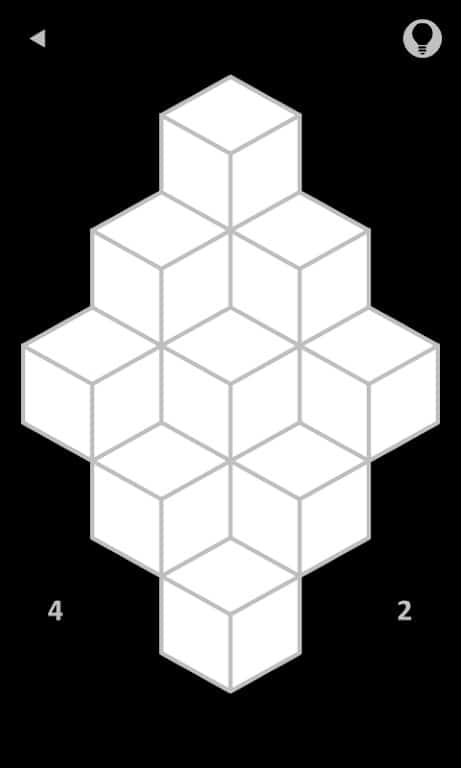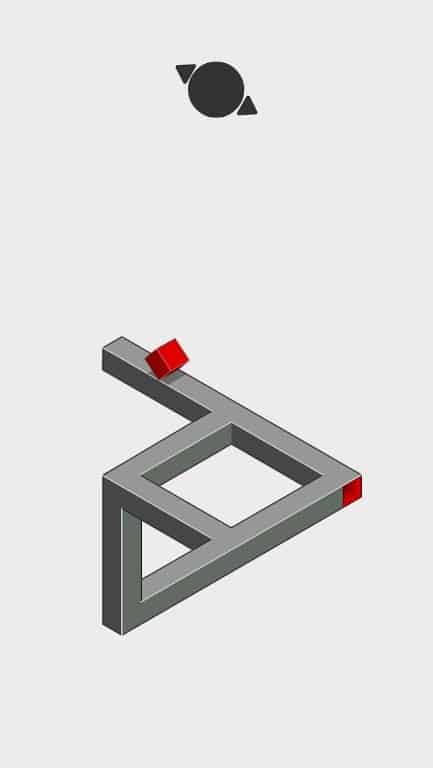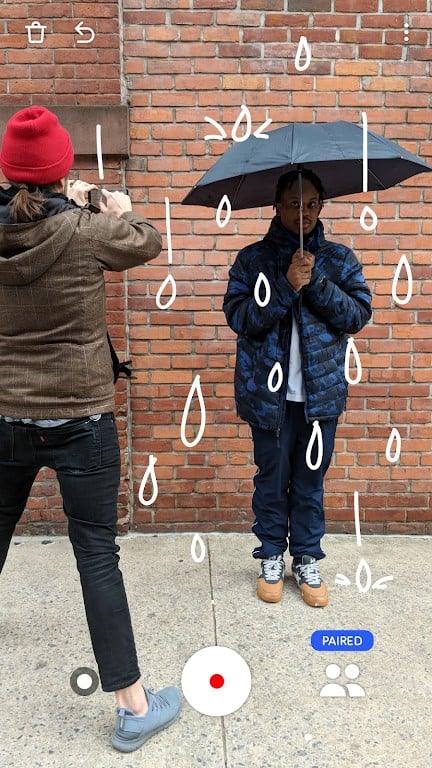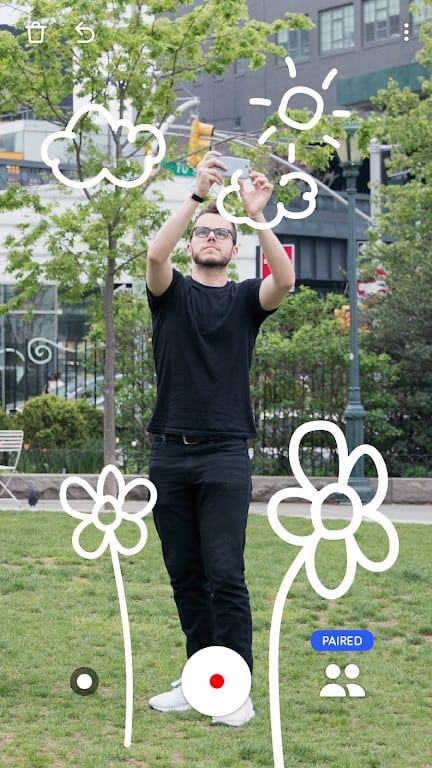The latest trends indicate an exponential growth in consumer awareness related to the everyday lifestyle: we care more about the things we eat and how we eat them, about the appliances we use (eco-friendly only) and the clothes we wear (fast fashion begone!). We consciously select the content displayed on a single device we hold most dear – year after year, the intensity and frequency of our smartphone usage is on the steadfast rise.
Digital minimalism provides an antidote to the torrents of mobile technology. This outlook, which is gradually entering the mainstream, highlights the positive rather than adverse effects of personal technology. We, the digital minimalists, counteract the potential time waste, sleep deprivation and unhealthy levels of stimulation with our insistence on using smartphones only with clear intent and refusal to replace real-life human connection with its digital counterpart. Some of us implement the rules of digital minimalism (delineated for instance by prof. Cal Newport in his book Digital Minimalism: Choosing a Focused Life in a Noisy World) by taking a social media detox, turning off notifications, abstaining from compulsive liking and scrolling or leaving our phones at home when we might not need them.
Less is more
If you need anything, there’s an app for that – this particular slogan keeps circulating among app designers and enthusiasts. Case in point: among five million games and apps featured in the Apple Store and Google Play, there are also those that help us concentrate, unwind, relax, unplug from social media and the stream of notifications, e.g. Forest – stay focused.
Nowadays, we grow increasingly cognisant of the way in which we curate our image and consume content. As a result, we adopt a fairly critical approach to the apps installed on our smartphones, steer clear of intrusive ads, frustrating in-apps, data collection and monetizing. We pay more attention to the app’s visual aspect and artistic merit. However, you can never escape human nature. Similarly to our ancestors, we seek entertainment and leisure – these days it exists mainly in the digital sphere, on our phones, amidst all the games and apps available at our fingertips.
Black, mobile game by Bart Bonte
Hocus, Mobile Game
Mobile games
According to the State of Online Gaming 2019 report, we spend an average of three hours per week on playing video games on tablets and mobile phones, almost as much as the amount of time devoted to gaming on consoles and computers. The most popular mobile games tend to be very well-executed, yet derivative visual gimmicks, fast-food products with tons of interactive features, jarring colours and sounds. The secret to their success boils down not only to a shrewd business model, but also solid budget for advertising. The types of mobile games downloaded most often include: casual or adventure game, simulation, puzzle, RPG, racing, tap games, HOPA (hidden object puzzle adventure), strategy and idle clicker.
In spite of their profusion, only select users relish in the niche productions, breaching the boundaries between genres and conventions. These games with clear unostentatious interface, designed by artists and aficionados instead of PR and market execs, elevate this form of entertainment into the aesthetic, visual and auditory experience that facilitates art reception, encourages contemplation, calms the nerves, boosts creativity, fosters spatial visualization and logical thinking… as well as impels us to establish and nurture genuine human relations.
Would you like to play? Here’s our selection of the top artistic mobile games.
Inspired by the artists!
A growing number of mobile games draws on the practice of visual artists, remixes their works and puts them back on the map. One of those apps is Hocus – a minimalist game inspired by the pieces of M.C. Escher, a Dutch graphic artist who died in 1972, known for creating bizarre worlds in a distorted perspective at odds with the visual perception we’re accustomed to. This black-and-white exercise in minimalism demands careful deliberation while toying with our assumptions and preconceptions about a three-dimensional space.
There are other video and mobile games based on Escher’s works, including Monument Valley – a spatial puzzle with much greater scope than Hocus, which offers gamers a chance to explore the perspective defying architecture inspired by “Relativity” (lithograph, 1953).
The creative output of another Dutch artist continues to inspire mobile games’ designers. The works of Vincent van Gogh, especially the series of three paintings depicting his bedroom in Arles, provided the template for the locations of a simple escape-room type of game entitled Cube Escape: Arles. The clues indispensable for leaving the room are scattered among the artist’s furniture, paintings, objects and clothes.
Minimalism and abstraction
As Leonardo da Vinci used to say, simplicity is the ultimate sophistication. If you adore minimalism and abstraction, then you’ll certainly enjoy the creations of Bart Bonte, an independent game designer (another Dutchman making an appearance). Ample ingenuity and wits are essential for solving Yellow, Black and Red, even though these two-dimensional puzzles are centred around pretty basic colours and shapes.
Games for mobile platforms developed by Infinity Games are definitely worth mentioning here. One of the studio’s products is Square Paint – a stress-relief game that applies the combination of muted colours and soothing sounds to help you unwind. The goal is simple: to fill all areas of increasingly complicated geometric figures with various colours. Another puzzle launched by this studio turned out to be one of the most popular mobile games of 2019. As the title suggests, Infinity Loop allows its users to create endless shapes by connecting lines. Infinity Games Studio’s portfolio contains an abundance of other minimalist games boasting an impressive number of millions of downloads (Hex, Shapes). Their popularity only proves that minimalism in mobile games’ design is here to stay.
Art and science
Infinity Games’ back catalogue also includes Energy: Anti Stress Loops. The game, which gives insight into the intricacies of energy transmission circuits, reduces anxiety and, at least according to selected users, alleviates the OCD symptoms. The fans of STEAM and the unity of art and science would probably enjoy Transmission: Information Age – a free app created by the British Science Museum featuring music by David Kanaga to introduce us to the concept of communication network. What exactly is energy? How is energy transferred? Have you ever thought about how dependent we are on electricity? The answers to these questions can be found in the slightly surreal game OHM – a virtual science centre.
Neo-noir and artistic experiments
Apart from their audiovisual value, artistic mobile games transcend the limits of genres, formats and conventions. Sufferosa, an innovative Instagram hack that offers an interactive non-linear storytelling experience on your mobile device, is the very epitome of experimentation. The app was presented during this year’s edition of Patch Lab, a digital art festival held in Kraków.
In order to retrace the steps of Rosa Von Braun, a woman who went missing, we must consult an array of characters awaiting us at various locations. The Instagram version of Sufferosa was created by the Kissinger Twins, a duo of well-known digital artists comprised of Katarzyna Kifert and Dawid Marcinkowski. The series is based on Marcinkowski’s own film released under the same title back in 2010.
The enthusiasts of dark tales are also highly recommended to check out other mobile games such as Limbo, Playdead’s Inside and Rusty Lake Hotel.
Just a line, AR app
Just a line, AR app
Alone or together?
Despite a widely recognised negative impact of smartphones on real-life personal relationships, both Apple Store and Google Play are still rife with mobile games and apps designed to bolster empathy and interaction. Like we’ve mentioned above, there’s always an app for this or that. Just a Line for instance taps into the potential of augmented reality to create a new kind of game. How does it work? The app allows two persons to simultaneously doodle virtual shapes and inscriptions against the backdrop of the real world. A smartphone becomes a large marker, the space around you becomes a board. Together, you can dance, play children’s games or compete in a tic-tac-toe. Other examples of mobile games encouraging users to have fun together in reality include Finger Battle created by a Dutch artist Rafael Rozendaal, and In Between, which I described in detail in the article App and New Media Art.
The price of mobile entertainment
More often than not, by installing a game on our phone (be it free-of-charge or not) we grant its developers access to our personal data and information that might be shared with marketing agencies and big corporations. It’s therefore very important to familiarize oneself with terms and conditions and eschew the games requiring access to our data: SD cards, cameras and GPS (unless this access is absolutely necessary for an app to function properly).
Taking into account the postulates of digital minimalism, we should also consider the environmental impact of mobile entertainment. The more technically and visually advanced the game gets, the more storage it uses. Due to a shorter battery life, a phone has to be recharged more frequently, increased possibility of ordinary wear and tear notwithstanding.
In order to reduce the carbon footprint generated by our use of electronics, we need to embrace minimalist games and obviously limit our screen time in general. Otherwise we run the risk of perpetuating a current one-year life cycle of smartphones which keeps producing tons of electronic waste. Perhaps the future apps or games for mobile and online platforms will place equal emphasis on a visual aspect, user experience, as well as energy consumption and environment.
The ethical smartphone has come to the fore recently – preceded by the rise of sustainable fashion and conscious consumption. Smartphones contain many different components manufactured in many different parts of the world. What sort of identification system could best inform us whether any norms and regulations were breached in the manufacturing process? Was this process environmentally friendly? These pieces of information are now crucial not only to a wealth of consumers deciding to invest in a brand-new personal device, but also to the production companies adjusting their offer.

















